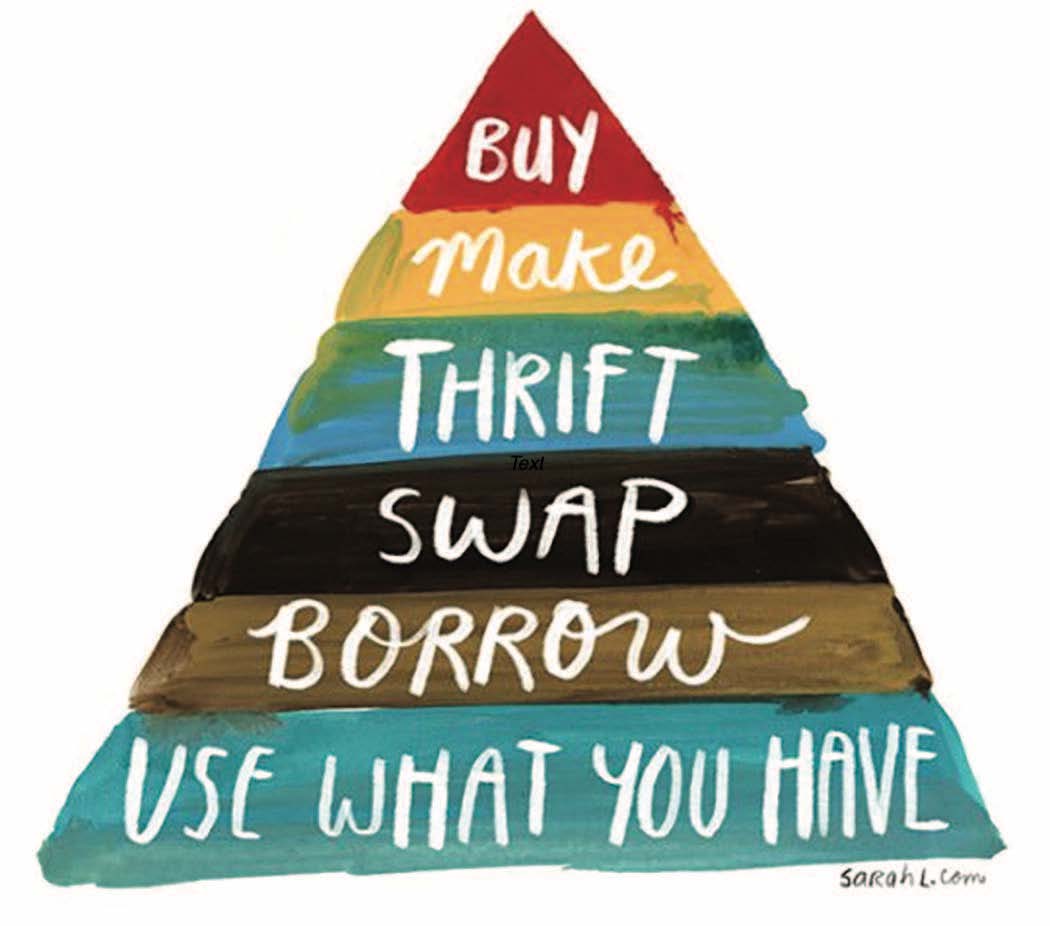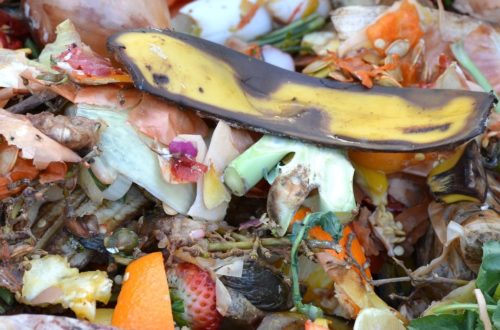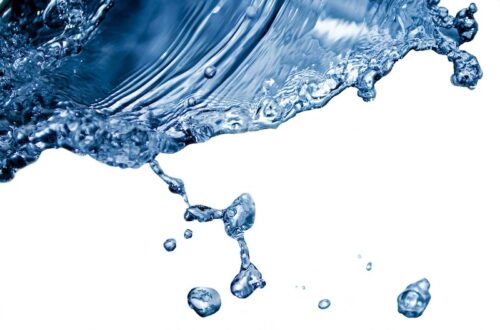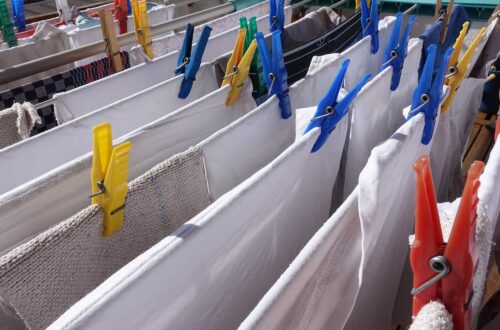“…..we – you and I, and our government – must avoid the impulse to live only for today, plundering for our own ease and convenience the precious resources of tomorrow. ”
— – Dwight D. Eisenhow
One beneficial consequence that comes from things getting uncomfortable is that it forces change. That is true whether you get a cramp from sleeping in a funny position, or when the recycling market collapsed after China no longer accepted the world’s discarded plastics. As uncomfortable and distressing as it is not to be able to recycle as we did before, we are now forced to acknowledge all that stuff we bring into our homes. We can make better packaging choices, buy in the bulk section of the grocery store, and ask manufacturers to take responsibility for their packaging and to set up programs for take-back. We can buy less. We can choose not to be captives of the consumer/convenience pitfall.
Recently, we taught our Less is More: Getting to One Can of Garbage a Year class to two groups. Each person, truly interested in reducing their waste and their climate impact, expressed a desire to be less consumeristic. They expressed concern about the future for all children, not just their own. Their comments about hectic daily lives, of keeping up with work, family, child care, grocery shopping, made me sad. Most families’ lives are too fast-paced to allow for taking the time to do much thinking about adopting new practices, and that actually adds yet more pressure and anxiety. As much as people want to change the way they do things, their rushed pace life makes such change really difficult.
After some research into when consumerism became so paramount, I found it was after World War II when the economy boomed and people had more money to spend. Industries that had geared up for the war effort wanted to maintain demand:
“After the Second World War, the aluminum industry had a problem; there were all these dams built to make electricity and all these aluminum refineries that used the electricity, but it all went into airplanes and there was no demand for the stuff. So, … the industry started inventing uses. They even held competitions for inventors to come up with ideas; that’s how we got the aluminum pie plate and other disposable aluminum packages.” [1] The convenience culture was born.
As mentioned in The Story of Stuff, in 1955, economist Victor Lebow said: “Our enormously productive economy… demands that we make consumption our way of life, that we convert the buying and use of goods into rituals, that we seek our spiritual satisfaction, our ego satisfaction, in consumption… we need things consumed, burned up, replaced and discarded at an ever-accelerating rate.” The problem is that this outlook doesn’t consider its impact on our lives and on the natural world.
As he left office in 1961, President Eisenhower warned:
“As we peer into society’s future, we – you and I, and our government – must avoid the impulse to live only for today, plundering for our own ease and convenience the precious resources of tomorrow. We cannot mortgage the material assets of our grandchildren without risking the loss also of their political and spiritual heritage.” (Bold added for emphasis)
As with the recycling collapse, another opportunity for change is looming large and urgently. More and more people are feeling the effects of climate change in their own lives and in the lives of others. Individuals can take many simple steps to reduce their climate footprint. From my own experience, I know that changing one’s behavior is rewarding; it makes me feel creative and resourceful. One simple change is to eliminate most paper products. Doing so protects Canada’s boreal forests which are being cut down for paper napkins, towels, and such. Switching to cloth napkins and towels requires just a small commitment of time and money to buy the new items. Just think of the money saved by not continuously buying paper products that get tossed in the garbage. Plus, leaving the forests in place is a fantastic way to fight climate change. A tree can absorb as much as 48 pounds of carbon dioxide per year and can sequester 1 ton of carbon dioxide by the time it reaches 40 years old. Obviously, leaving those trees in place is the wiser choice.
What if we all adopted a practice that I’m calling Just Enough? We would commit to using just enough of the resources available to us to get the job done, whether that means the water needed for cooking, cleaning and bathing, or the energy to heat and light our home, or the food we eat to be healthy, or the toothpaste we put on our toothbrush. Just Enough.
How do we decide what is enough? And what would happen if we all used Just Enough? One meaning of enough is “the amount that is necessary”, the amount that is needed and no more. Years ago, after taking some of the Northwest Earth Institute’s courses, I thought about what my family really needed, what was just our share. I came up with the basic human needs as described in Maslow’s hierarchy: Food, clothing, shelter, water, etc. Taking time to think about our needs helped clarify what was most important for us to enjoy a satisfying, purposeful, peaceful life, one that didn’t unfairly burden other living creatures and the ecosystem.
Frugality has played a big part in our changes. I think a lot about how our having led an intentionally frugal life has helped us live our green values. When we’re frugal with our money, we’re not using up the planet’s resources either. We focus on not wasting, but on using Just Enough. There is so much less stress when we don’t overspend. In fact, recently I have seen the phrase “Frugality Is the New Green”.
I like to do little experiments to see how much of a product or resource I can conserve. For instance, I can look at our water bill, then figure out ways to reduce the bill by conserving water use in our home. I found out recently that our family uses just slightly more than half the water that a standard two-person household uses. Obviously, we are also saving a lot on our bill. (Look online for water-saving practices.)
Yes, I know this sounds like lots of thinking. And it is, but isn’t it worth it? In my opinion, new thinking is what is needed right now. When we practice Just Enough, we are using only what we truly need. The artist Sarah Lazarovic created a new hierarchy similar to Maslow’s Hierarchy of Needs; hers is entitled “The Buyerarchy of Needs”. This alternative hierarchy may help you decide what you truly need.
1) For a brief history of consumerism and convenience: Https://bit.ly/2YKfRcs
2) For information on the water footprint of food: National Geographic
3) EcoMind: Changing the Way We Think to Create the World
4) Creating the World We Want by Frances Moore Lappe
Betty Shelley, and her husband, Jon, have filled only one 35-gallon can of garbage per year since 2006. In her three-session class, “Less is More: Getting to One Can of Garbage a Year”, Betty Shelley teaches her techniques for reducing waste.
For more info: www.reduceyourwasteproject.com
Sarah Lazarovic is an artist based in Toronto. She writes the positive climate newsletter Minimum Viable Planet, which you can find at mvp.ist







One Comment
Pingback: